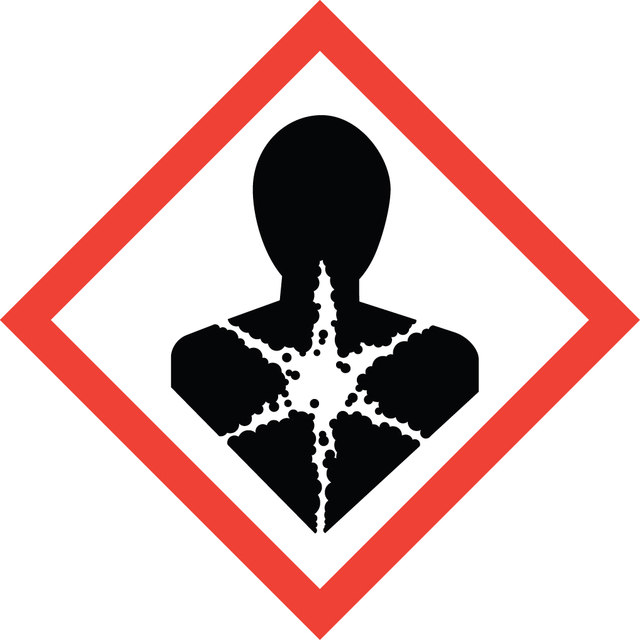Sign In to View Organizational & Contract Pricing
Select a Size
About This Item
UNSPSC Code:
41105331
NACRES:
NA.54
Product Name
LysargiNase, suitable for peptide or protein digestion insolution or in gel
recombinant
expressed in E. coli
Quality Level
form
solid
shipped in
ambient
Related Categories
General description
LysargiNase is a metalloproteinase found in the thermophilic archaea Methanosarcina acetivorans. It specifically cleaves before lysine and arginine residues in proteins. This cleavage results in peptides with molecular weights similar to tryptic peptides, but with N-terminal lysine or arginine residues that can be fragmented with b ion-dominated spectra. This can improve protein C-terminal peptide identification and several arginine rich phosphosite assignments. Unlike with trypsin, LysargiNase cleavage also occurs at methylated lysine and arginine, allowing detection of these epigenetic modifications.
LysargiNase is suitable for peptide or protein digestion in solution or in gel.
Application
LysargiNase is suitable for peptide or protein digestion in solution or in gel.
LysargiNase is suitable for peptide or protein digestion in solution or in gel. It is active under a variety of solvent conditions including 5 mM TCEP, 5% methanol, 5% acetonitrile, 0.8 M urea, 0.1% RapiGest, 1% deoxycholate, 0.2% SDS and 1% NP-40. It is active up to 55°C at pH 6 – 9. LysargiNase is reversibly inhibited by 1, 10-phenanthroline, EDTA and other calcium and zinc chelating agents. For peptide or protein digestion, a ratio of between 1:100 to 1:20 (w/w) enzyme:substrate is recommended.
Physical form
Each vial contains 20 µg LysargiNase, prepared by recombinant expression in E. coli and lyophilized from buffer. Upon reconstitution in 20 µL water, the enzyme is in 50 mM HEPES, 5 mM CaCl2, pH 7.5.
Preparation Note
Store the lyophilized product at -20°C for up to 2 years. After reconstitution, the unused material can be stored in the freezer in aliquots. Avoid repeated freeze thaw cycles.
Other Notes
Concentration: Please refer to lot specific datasheet.
Each vial contains 20 µg LysargiNase, prepared by recombinant expression in E. coli and lyophilized from buffer.
Disclaimer
Unless otherwise stated in our catalog or other company documentation accompanying the product(s), our products are intended for research use only and are not to be used for any other purpose, which includes but is not limited to, unauthorized commercial uses, in vitro diagnostic uses, ex vivo or in vivo therapeutic uses or any type of consumption or application to humans or animals.
Signal Word
Danger
Hazard Statements
Precautionary Statements
Hazard Classifications
Eye Irrit. 2 - Resp. Sens. 1 - Skin Irrit. 2 - STOT SE 3
Target Organs
Respiratory system
Storage Class Code
11 - Combustible Solids
WGK
WGK 1
Certificates of Analysis (COA)
Search for Certificates of Analysis (COA) by entering the products Lot/Batch Number. Lot and Batch Numbers can be found on a product’s label following the words ‘Lot’ or ‘Batch’.
Already Own This Product?
Find documentation for the products that you have recently purchased in the Document Library.
Cynthia Tallant et al.
The Journal of biological chemistry, 281(26), 17920-17928 (2006-04-22)
The metzincin clan encompasses several families of zinc-dependent metalloproteases with proven function both in physiology and pathology. They act either as broad spectrum protein degraders or as sheddases, operating through limited proteolysis. Among the structurally uncharacterized metzincin families are the
Le Zhang et al.
ACS chemical biology, 16(11), 2595-2603 (2021-11-05)
Methods for the selective labeling of biogenic functional groups on peptides are being developed and used in the workflow of both current and emerging proteomics technologies, such as single-molecule fluorosequencing. To achieve successful labeling with any one method requires that
Liana Tsiatsiani et al.
The FEBS journal, 282(14), 2612-2626 (2015-04-01)
Peptide-centered shotgun analysis of proteins has been the core technology in mass spectrometry based proteomics and has enabled numerous biological discoveries, such as the large-scale charting of protein-protein interaction networks, the quantitative analysis of protein post-translational modifications and even the
Pitter F Huesgen et al.
Nature methods, 12(1), 55-58 (2014-11-25)
To improve proteome coverage and protein C-terminal identification, we characterized the Methanosarcina acetivorans thermophilic proteinase LysargiNase, which cleaves before lysine and arginine up to 55 °C. Unlike trypsin, LysargiNase-generated peptides had N-terminal lysine or arginine residues and fragmented with b
Kazuya Tsumagari et al.
STAR protocols, 2(3), 100682-100682 (2021-08-12)
Characterization of protein termini is essential for understanding how the proteome is generated through biological processes such as post-translational proteolytic events. Here, we introduce a practical protocol for terminomics to achieve simple and sensitive N- and C-terminal peptide enrichment. We
Related Content
Our team of scientists has experience in all areas of research including Life Science, Material Science, Chemical Synthesis, Chromatography, Analytical and many others.
Contact Technical Service
